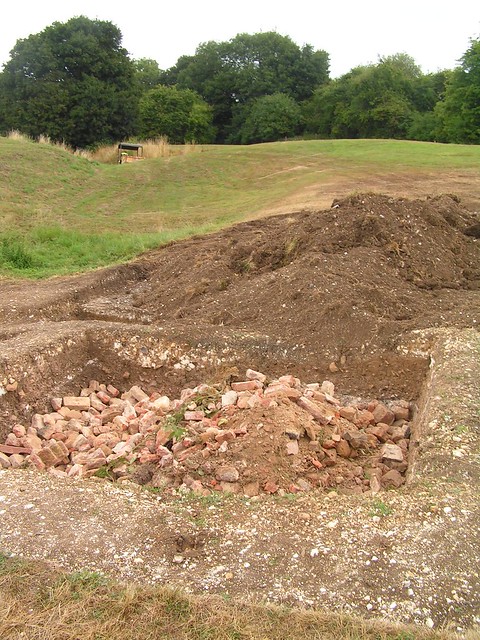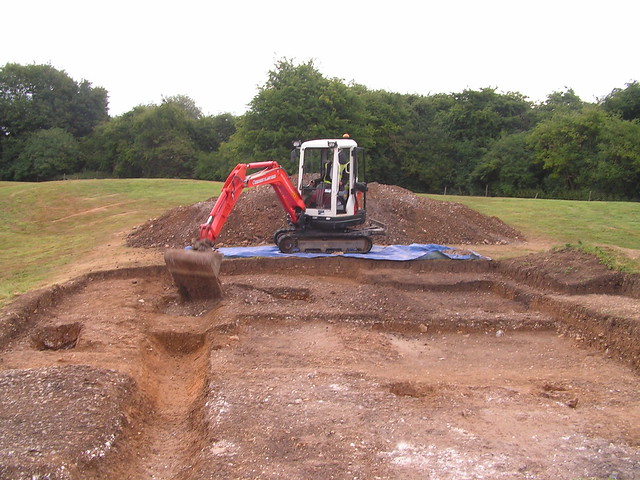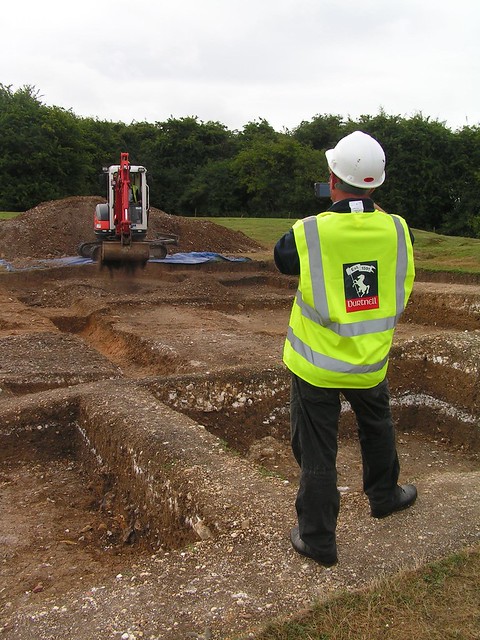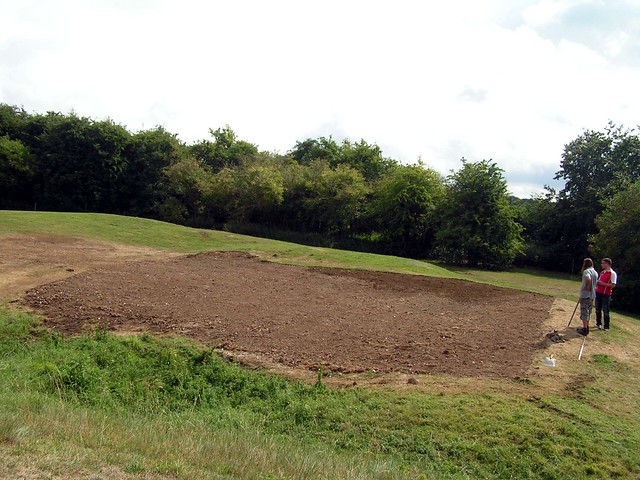The trench has been covered!
Some Reflections…
After three weeks of deturfing and excavation it took only one day to cover back over the 18 x 17 metre trench we had made, re-covering the original 1960s Aldermaston Archaeological Society’s excavation.
As an archaeologist working at a university, projects that I am involved with are generally research-based. They begin with a question that needs to be answered and sometime end with an excavation. Increasingly, excavation is the last resort. Archaeology is a destructive process and once you have dug something, it is no longer there. At the University of Southampton, we work a lot with other organisations on our research projects, and we are also lucky to have an archaeological prospection unit (APSS website). This means that we can carry out our own extensive geophysical surveys, which are non-invasive by nature.
Rescue archaeology is the mainstay of commercial archaeology units. They work hard to protect records of our heritage through watching briefs at building sites, and by excavating sites at risk of removal by developers. But both rescue and research archaeology provide us with clues about our past.
We were lucky with this year’s Basing House dig that we were able to work at such an important site. We not only carried out a large survey across the site, but we were also able to excavate. We wanted to find out more about the different phases of the history of the site, particularly the earlier life of the site, before the Tudor-period building of the Old House.
Working with a Box Grid
We were even luckier still to be able to excavate a site that provided us with information not only about the history of the site of Basing House, but also about the activity of archaeological excavation in the early 1960s.
As an archaeologist, I found our exploration of a box grid trench system fascinating, and also extremely relevant to my own practice.
Digging through the back fill and chasing original trench edges meant we had to think like the archaeologists using the original box grid system. The order in which the trenches were dug, the way in which some contexts, once identified, were left in situ, and the different phases of removal of baulks, all told us about the decisions that were being made by archaeologists over 50 years ago as they were excavating the site.
At the bottom of the 1960s trenches, we found that the archaeologists had over-dug. They had flattened out the trenches that they had made, after they had recorded the archaeology. They had done this to be certain of what they had found, and this highlights the destructive nature of Archaeology. This posed a challenge for us, as often something that they had said was there in their 1964 report of the original dig, was no longer present in the trench that we were excavating. We had to think laterally (quite literally in fact!) and come at some details from other directions. If we couldn’t see something in the section of the box trench, we could come look for a context in other parts of the larger trench, trying to match up surfaces in different parts of the excavation.
That’s enough reflection for one post… Now for the main event; photos of the digger!
Filling the Trench
Unneeded bricks were used to line the bottoms of the original box trenches.

Bricks were used to line the bottoms of the original box trenches.
The digger then used the spoil heap to in-fill the rest of the gaps.

The digger then used the spoil heap to in-fill the rest of the gaps.
Always fantastic, Durtnell, who are the building contractors currently working on the site, helped out.
Factoid: Durtnell are the longest running building contractor. They’ve been building and refurbishing for over 400 years! Their website is here: http://www.durtnell.co.uk/ They’ve been working at Basing House for a while and really are great. There’s a little bit on their website about the work that they have been doing at the site (http://www.durtnell.co.uk/basing-house.html) but it doesn’t reflect the immense task that they are currently undertaking, to stabilise the brickwork across the site and to build a huge viewing platform so that visitors to Basing House can see the plan of the cellars of the Tudor house from up high. The bricklayers showed us a small stretch of wall that they had been working on, replacing the bricks with new handmade Tudor-style replacements, using lime mortar to match the original style. In the tiny part that they had just fixed up, there were 800 bricks! This is because the walls are layered. I can’t imagine how many they need across the entire site.

Always fantastic, Durtnell, who are the building contractors currently working on the site, helped out. Factoid: Durtnell are the longest running building contractor. They’ve been building and refurbishing for over 400 years!
The filled in trench! Looking very smart indeed.

The filled in trench! Looking very smart indeed.
We’re working on the findings of the excavation now,
so check back soon to find out more about this year’s excavation!
Filed under: Archaeology of Archaeology, Backfilling, Summer Excavation Tagged: back-filling, digger
